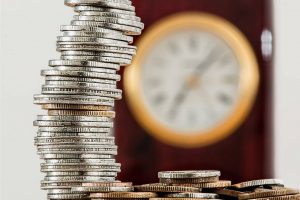The forward price-to-earnings ratio (forward P/E ratio) is a financial ratio that uses the expected earnings per share (EPS) for the next 12 months to calculate the valuation of a company.
It is used to compare the value of a company’s stock with its future earnings prospects.
The forward P/E ratio is calculated by dividing the current market price per share by the expected EPS for the next 12 months.
For example, if a company’s stock is currently trading at $50 per share and the expected EPS for the next 12 months is $5, the forward P/E ratio would be 10.
This means that investors are willing to pay $10 for every $1 of earnings that the company is expected to generate in the next 12 months.
The forward P/E ratio can be used to compare the valuation of different companies in the same industry, as well as to compare the valuation of a single company over time.
A high forward price-to-earnings ratio indicates that investors are optimistic about the company’s future earnings prospects and are willing to pay a premium for its stock.
A low forward P/E ratio may indicate that investors are less optimistic about the company’s future earnings prospects.
It is important to note that the forward price-to-earnings ratio is based on estimates and projections, and as such, it can be subject to change.
In addition, the forward P/E ratio does not take into account other factors that may affect a company’s valuation, such as dividends, growth rate, and risk.
As such, it is important to use the forward P/E ratio in conjunction with other financial ratios and analysis techniques when evaluating a company’s stock.


